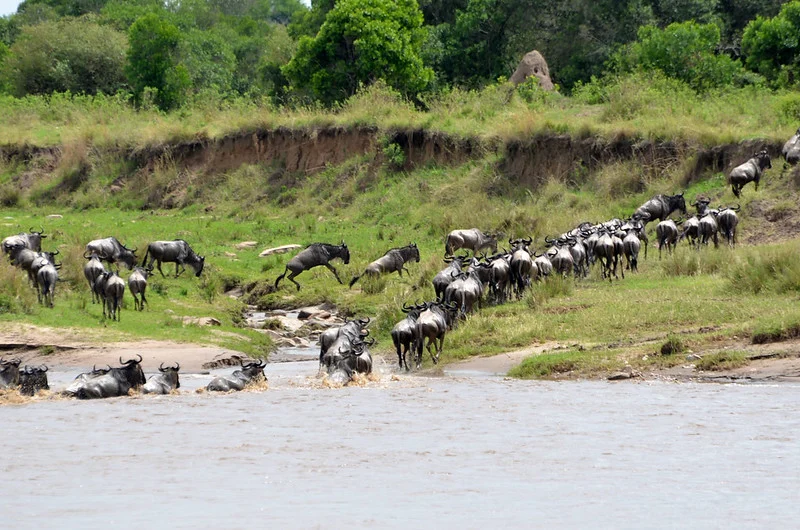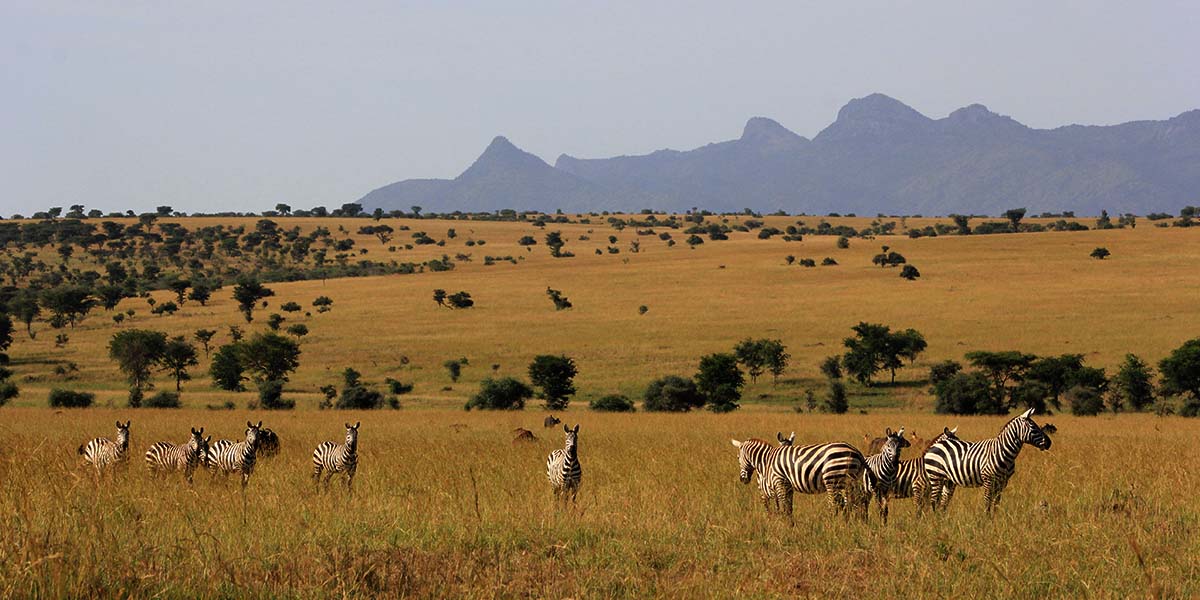Best Self Drive Guide to Serengeti National Park
Serengeti National Park epitomizes the quintessential African wildlife safari, including the African Big Five: Rhinos, Leopards, Lions, Elephants, and Buffaloes. The park is among the seven natural wonders of Africa and one of the ten natural wonders globally. It is a sanctuary not just in Tanzania but also globally. Serengeti National Park is one of the largest national parks in Tanzania, encompassing a total area of 14,763 square kilometers, comparable to 5,700 square miles. It is one of the oldest national parks in Tanzania, designated as a protected area in 1921. The primary purpose of designating the area as a gazette was to save the lion population within it. Serengeti National Park
The poachers and the indigenous Maasai people historically killed lions as part of their customary practices and to safeguard their livestock. The protection was then expanded to encompass the entire big cat family from poachers. In 1951, the park was officially designated and proclaimed as a national park.
As of now, Serengeti National Park is one of the premier national parks not only in Tanzania but in all of Africa. It is one of the four national parks that constitute the Northern Tourism Circuit of Tanzania. In conjunction with its counterparts, Ngorongoro Crater, Tarangire National Park, Serengeti National Park, and Lake Manyara National Park.
History of Serengeti National Park
The park was called after the Maasai term “Siringet,” which they employed to describe the region’s landscape. It is referred to as “Siringet,” signifying the infinite plains that extend indefinitely. They believed the Serengeti grasslands were boundless, since one may view indefinitely yet cannot ascertain their terminus. The indigenous Maasai people were the original residents of the region before their relocation to the Ngorongoro Conservation Area. The park was initially explored by the European explorer Oscar Baumann in 1892. Following his journey, Stewart Edward White arrived at Serengeti National Park in 1913 and subsequently returned in the 1920s, residing in the Seronera area for a duration of three months.
Where is Serengeti located
Serengeti National Park is situated in the northern region of Arusha town along the tourism circuit. It is bordered by significant protected areas and conservancies, including the Ngorongoro Crater, local conservancies, and the Masai Mara National Reserve in Kenya. The park is readily accessible by vehicle, requiring approximately 7 to 8 hours of scenic driving. The journey spans around 350 kilometers from the town of Arusha via well-maintained tarmac roads. The journey traverses safeguarded regions such as Lake Manyara and the Ngorongoro Crater. This picturesque drive through the protected regions allows for enjoyable wildlife drives until you arrive at the park’s main entrance. You will appreciate the picturesque journey via numerous coffee farms and indigenous Maasai mayata en route.Access to the park is also possible via air, with an increased number of domestic flights from Arusha Airport directly to various airstrips within the park. Seronera Airstrip, the largest airstrip in the park, is internationally recognized. The airstrips are located across the park, with several being in the northern section.
Serengeti National Park was subsequently designated a UNESCO World Heritage Site in 198. It was also designated as one of the Seven Natural Wonders of Africa due to its hosting of the world’s greatest animal migration, the wildebeest migration. The park’s fame primarily stems from its plentiful wildlife, which exists in substantial populations. The yearly wildebeest migration draws millions of tourists to observe the natural spectacle of countless wildebeests and zebras traversing the Mara River to the Masai Mara National Reserve.

Features of Serengeti National Park
Birds
Serengeti National Park is a birdwatching haven, with over 500 avian species. It accommodates over 34 species of raptors, rendering it one of the premier sites in Africa for raptor diversity. The avian species are Fischer’s loverbird, Grey-breasted spurfowl, Rufous-tailed weaver, Grey-crested helmet-shrike, Kori bustard, Usambiro barbet, Secretary bird, Verreaux’s eagle, Red-capped robin-chat, Yellow-throated sandgrouse, Common bulbul, lovebirds, starling, among others.
Animals
The Serengeti is renowned for its substantial population of wildlife, particularly carnivores, within the park. It is also the site of the wildebeest migration, the greatest animal migration in the world. Serengeti National Park Serengeti National Park is one of the protected locations where one can observe all of the African Big Five: lions, leopards, rhinos, buffaloes, and elephants, in substantial quantities. Frequent sightings of the unusual tree-climbing lions occur in the Seronera region of Serengeti National Park. Guests can observe a lion swinging on a tree branch while relaxing in its natural habitat. The park is home to various animal species, including cheetahs, hyenas, jackals, jennet cats, zebras, wildebeests, giraffes, hippos, crocodiles, topis, oribis, and numerous others.

Migration of wildebeest
The Serengeti National Park has the largest wildlife migration in the world. The clockwise migration of millions of wildebeests from one region to another is distinctive. The annual migration of the animals occurs in a clockwise pattern. The wildebeest migration is the pinnacle of Serengeti National Park safaris, attracting millions of tourists to observe this natural spectacle. The Serengeti was designated a natural wonder of Africa because to the wildebeest migration. The migration occurs nearly year-round, peaking from July to August when the wildebeest across the perilous Mara River into the Masai Mara National Reserve. Additional segments of the migration occur in June along the Grumeti River in the western region of the Serengeti, while the calving season transpires early in the year in the southern region of the Serengeti.

Plants
Serengeti National Park harbors around 314 kinds of traditional trees. This encompasses various grass species, trees, and bushes found throughout the national park. Certain plant species possess therapeutic properties, while others are indigenous African trees exclusively located in Serengeti National Park. The diverse flora types that constitute the expansive plains of Serengeti National Park have contributed to the extensive variety of plant species.
Moru Kopjes
The kopjes are picturesque geological formations, consisting of ancient granite boulders referred to as “Moru” in the Maa language by the local populace. Serengeti National ParkThis indicates that the rocks are ancient and have been significantly worn over the years by forces such as rainfall and biological factors, which have exposed their iron content. The Moru Kopjes is a habitat for the few remaining black rhinos in Serengeti National Park.
Activities conducted at Serengeti National Park
Key activities available to tourists on their Serengeti National Park safaris include:
Birding
Birding safaris are a primary activity available in Serengeti National Park. Birdwatching can occur year-round. The optimal period for birding expeditions is during the rainy season when birds are nesting. The park is home to five endemic bird species, which are exceedingly uncommon, as well as 30 species of raptors. The guest must own a high-quality camera and superior binoculars capable of capturing live aerial action while birds are in flight. The avian inventory is extensive, comprising the Kori bustard, Secretary bird, Rufous-tailed weaver, Fischer’s lovebird, Grey-breasted spurfowl, Black-headed gonolek, Spurb sterling, Ruppell’s vulture, Southern ground hornbill, Grey-crested helmet-shrike, Black Eagles, Ostriches, and Usambiro barbet, among others.
Wildlife observation
Game viewing is a primary activity conducted in Serengeti National Park. Game drives are available year-round. Approach various animals, including the African Big Five—cheetahs, lions, leopards, elephants, and rhinoceroses—alongside other mammals such as wildebeests and warthogs, in their native habitats. Game drives can be conducted as a full-day excursion or divided into two sessions: morning and afternoon drives. The 4×4 off-road vehicles are advisable owing to the park’s topography, particularly during the wet season.
Hot Air Balloon
Enjoy the pinnacle of the park with an eagle on hot air balloon safaris. The balloon safaris commence early in the morning with a briefing from the pilots before to our ascent. The balloon operator will meet you at the lodge and transport you to the launch site. Balloon safaris are conducted in the middle Seronera region, the southern Ndutu area, and the northern Serengeti adjacent to the Mara River. The hot air balloon ride lasts between 2 to 3 hours, contingent upon the day’s weather conditions. This is a privately organized safari adventure in Serengeti National Park. The park entry costs do not encompass this; prior reservation is required due to its maximum capacity limitations.
Additional activities available in Serengeti National Park encompass cultural tours, nature walks, visits to the tourist information center, among others.
